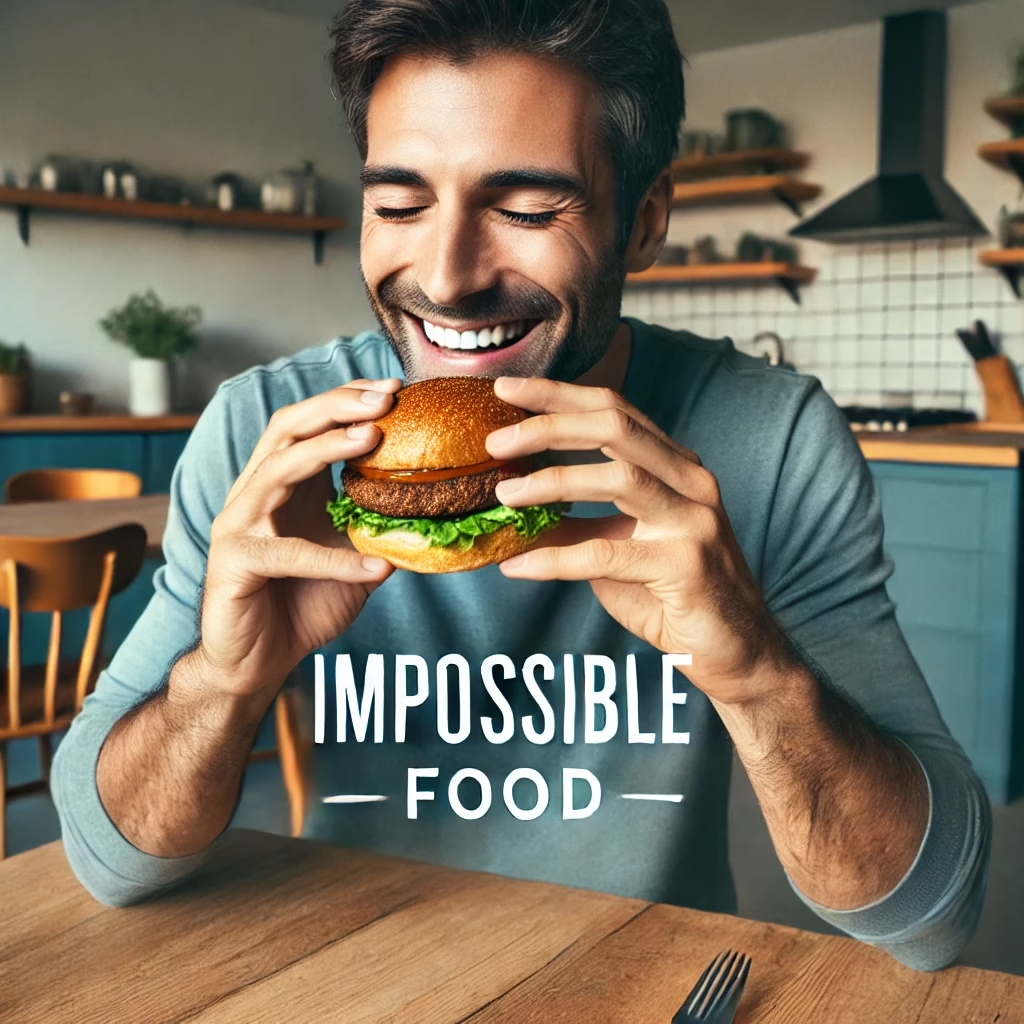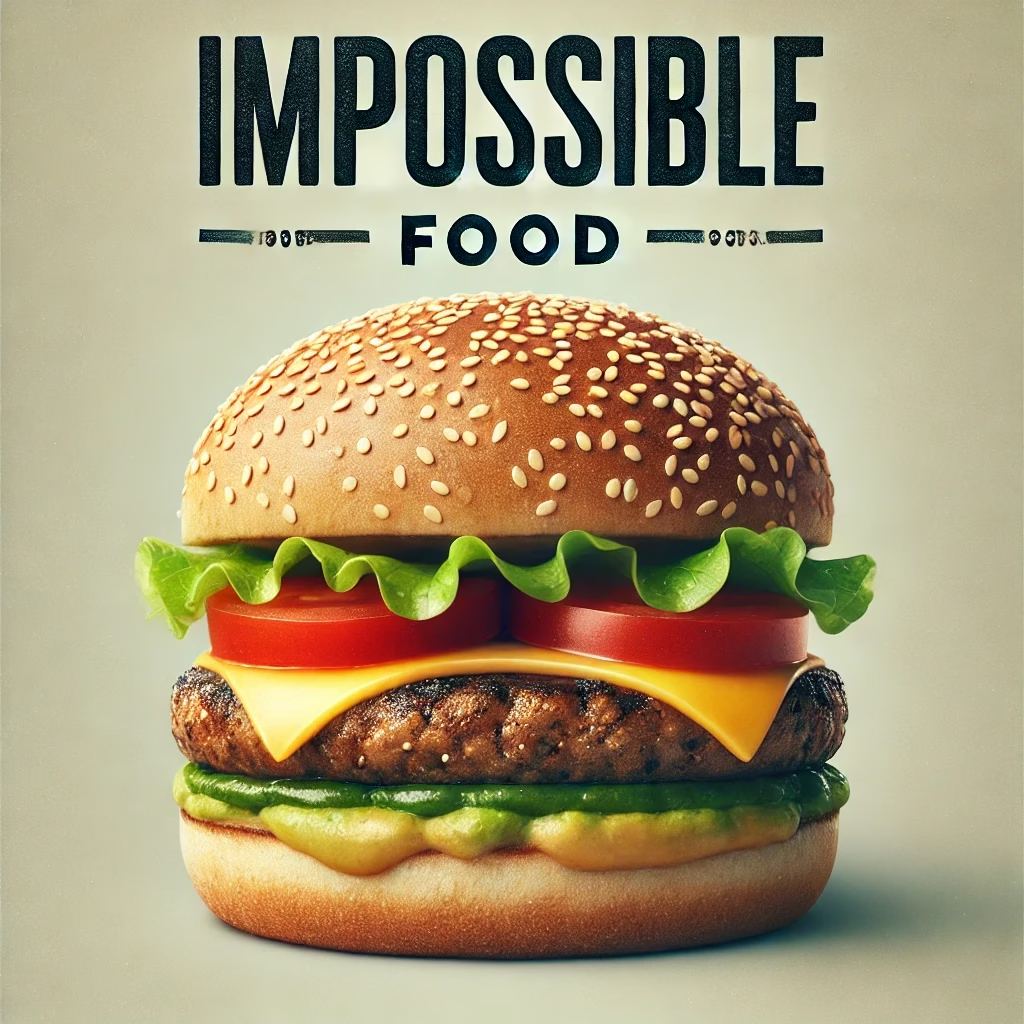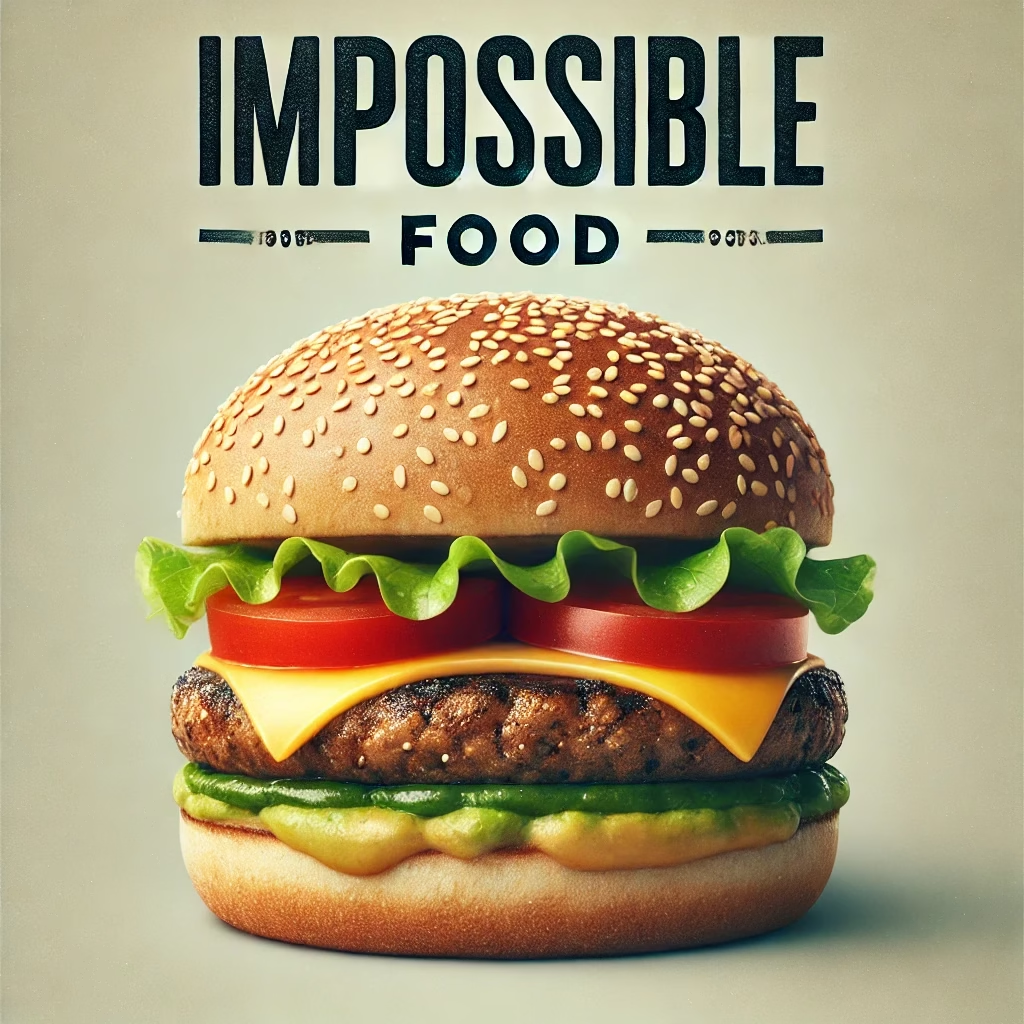The Impossible Foods Revolution in the Future of Food
Set against the backdrop of an oncoming time of growing concerns about sustainability, health, and the environmental consequences of choices, Impossible Foods was founded to be one of the many pioneers in the food tech industry. This company wants to change the global food system by producing delicious plant-based meat alternatives that are good for people and good for the Earth. Let us leap into the story of Impossible Foods, what it is doing to produce pioneering goods, and the presence it is creating in the world.
Birth of Impossible Foods
Impossible Foods was founded in 2011 by Dr. Patrick O. Brown, a biochemist at Stanford University and a former pediatrician. Envisioning plant-based products that might withstand the sensibilities of taste and texture—and perhaps even nutritional values—of conventional meat, he appealed to people to act against climate change and the environmental destructiveness of animal agriculture.
Products for the commercialization of the company’s riper baby, the Impossible Burger, were launched in 2016, attracting massive attention despite its resemblance to ‘blood’ running out of red steak due to one of its key ingredients: heme. Heme itself is that molecule, which almost all living things-from the cheap red turf, to the exotic agave-possess. It carries that taste and smell that carnivores so love. That heme, derived from soy plants, became the breaking point on the way to realizing modern plant-based meat technology.
Impossible Foods Distinction
Here are just a few ways in which Impossible Foods distinguishes itself in the crowded plant-based food market:
Science-Based Innovation:
The company relies heavily on scientific research that has deep validity. By acquiring an understanding of what makes meat taste, smell, and cook like meat, Impossible Foods has used plant-based alternatives to mimic that experience.
Environnementally Sustainable:
Impossible Foods endeavors to make every step of food production as eco-friendly as possible. They claim that one Impossible Burger uses 96% less land, 87% less water, and emits 89% less greenhouse gases when compared to a conventional beef burger.
Taste Comes First:
Unlike most plant-based alternatives, which are made for vegetarians and vegans, Impossible Foods is aiming directly at meat lovers. Created with carnivores in mind, its products are an entry point into more sustainable eating habits.
Choice Beyond Compare:
Products from Impossible Foods have an incredible level of adaptability. From burgers, meatballs, and tacos to sausage making, the breadth of their plant-meat range makes it pretty simple for the consumer to incorporate across their diet.
The Impossible Burger: Paradigm Shift
The Impossible Burger is the main event. It presents an altogether juicy-nothing-but-beefy experience without any environmental or ethical worries made of simple ingredients-like soy protein, coconut oil, and potato protein.
People are loving it in the restaurants, fast-food chains, and kitchens. Thanks to a major partnership with Burger King, which released the Impossible Whopper, and Starbucks, this plant-based meat is now getting into the mainstream.
Product Line Expansion
The Impossible Burger may be the best-known item produced by Impossible Foods, but the company now offers:
Impossible Sausage: A plant lunch sausage suitable for breakfast sandwiches and pizza.
Impossible Chicken Nuggets: A deliciously crispy plant alternative to chicken nuggets.
Impossible Pork: A ground pork substitute adaptable for applications such as dumplings, tacos, and stir-frying.
This diversification mirrors the company’s mission of supplying sustainable alternatives for any kind of meat.
Environmental Sustainability
Animal agriculture is a key contributor to climate change, deforestation, and biodiversity loss. Impossible Foods is tackling these problems per medium by offering plant-based alternatives.
Nevertheless, some peculiarities concerning Impossible Foods bear mentioning in jawing its environmental advantages:
Reduced Greenhouse Gas Emissions: Livestock production accounts for a significant part of emissions globally. Replacement of animal protein by plant-based meat can drastically cut this footprint.
Water Conservation: To produce a pound of beef, thousands of water gallons are needed; a minimal amount is consumed in producing plant-based meat.
Land Conservation: Switching to plant-based meat reduces the requirement for grazing lands and feed crops, thus conserving natural ecosystems.

Challenging and Critiques
Nevertheless, with fame also came challenges for the Impossible Foods Company. Some critics say the products are highly processed and are therefore not as healthy as whole plant foods. Others wonder whether the supply chain can be sustainably maintained in the long run, with soy and some other ingredient sources.
On the other hand, the company is always innovating, working on improving its products’ nutritional profiles and finding new ingredients that help lessen environmental degradation.
Future of Impossible Foods
Impossible Foods has ambitious plans for the future. The company intends to:
Expand its product lines to include even more meat alternatives.
Make its products accessible and affordable everywhere in the world.
Continue committing to reducing its environmental footprint through innovations and sustainable practices.
As consumer demand grows for plant-based foods, Impossible Foods is poised to lead the way in developing a more sustainable and ethical food system.
Conclusion
Impossible Foods is more than a food company. It is a movement. By marrying modern science with the highest sustainability principles and being dead set on flavor, Impossible Foods proves that plant-based meat can be a good alternative to real meat in practice and in taste. Whether you are a hardcore vegan, mildly curious carnivore, or just someone trying to be a bit more eco-friendly, Impossible Foods offers something for you and the Earth.
So, the next time you crave a burger, do the world a favor and give the Impossible Burger a shot. You just never know; you might fall deeply in love with it, and so will the planet!
Food Network Restaurant Impossible Foods in USA
Impossibles Foods is doing wonders for fine dining in the USA beyond collaborating with eminent restaurants such as Burger King’s Impossible Whopper, White Castle, and Red Robin on their famous Impossible Cheeseburger. Plant-based brings undeniable excitement into deliciously sustainable, future-forward healthy options.
Food Network may not outwardly promote Impossible Foods, yet chefs and shows centered around plant-based culinary creations spur the innovation of restaurants with products such as Impossible Burger and Impossible Sausage. Impossible Foods is changing the way America eats-from fast food to fine dining, one bite at a time.
Founders and Their Journey: A Saga of Innovation and Impact
Impossibles Foods is not just a company but the vision of an eminent scientist and a team of passionate innovators set to disrupt foodways. Dr. Patrick O. Brown is the founder and a driving force behind Impossibles Foods. Here we take a closer look at the founders, their journey, and how they turned that audacious notion into a global movement.
Dr. Patrick O. Brown: A Visionary Scientist
Dr. Patrick O. Brown, the biochemist, and former pediatrician is the founder and CEO of Impossibles Foods. Born in 1954, his was a life where curiosity about science always vied with the desire to make a difference in humanity.
Before embarking upon Impossible Foods, Dr. Brown had worked in various academic institutions with distinction, being the biochemistry professor at Stanford University and investigator of Howard Hughes Medical Institute. His work was in the area of genomics and molecular biology, and Dr. Brown co-founded Public Library of Science (PLoS), a nonprofit organization hews towards putting scientific research within the easy reach of the general public.
Dr. Brown went on to take a sabbatical from Stanford in 2009 to work towards what he considered as possibly the biggest challenge confronting mankind: the environmental consequences of animal agriculture. He saw the production of meat and dairy as prime movers of climate change, deforestation, and loss of biodiversity. And his determination to offer a solution translated into founder’s work to build an acceptable, environmentally safe replacement for meat: something that would appeal to the most dedicated carnivore.
The Founding of Impossible Foods
Dr. Brown established Impossible Foods in 2011, with a vision of obviating animals in the food system by the year 2035. He built a team of scientists, chefs, and food experts in the task of simulating the taste, texture, and aroma of meat from plants.
The main breakthrough was really finding this molecule called heme, which exists in plants and animals and really provides the flavor of meat. Dr. Brown and his team figured out that you could get the heme from soy plants, then use fermentation to produce a scalable and sustainable source of it. Thus, this became the basis of their first product: the Impossible Burger.
The Early Days: Challenges and Victories
From the very beginning, they had to face challenges. In the early days, Impossible Foods had trouble convincing investors that there was any possibility that plant-based meat would ever be able to compete with real meat. However, Dr. Brown’s unyielding conviction toward the cause and the steady stream of innovations from their team eventually brought them the support they needed.
In 2016, the Impossible Burger debuted at David Chang’s restaurant, Momofuku Nishi, in New York City. The burger was an instant hit, praised for its meaty flavor and juicy texture. From here, Impossible Foods entered into high gear with instant fame.
Building Up and Going Mainstream
In anticipation of the huge surge in demand for Impossible Burger, the company focused on scaling production and reaching across new markets. Here are just a few milestones on the timeline that was Impossibles Foods’ journey:
2017: Launch of product sales in grocery stores for home cooks by Impossible Foods.
2019: Collaborated with the Burger King to roll out Impossible Whopper, which is the Impossible version of the customer’s fast-food famous burger. It brought Impossibles Foods into the mainstream and pu plant-based meat to thousands of additional customers.
2020: Impossibles Foods continues growing despite the adverse conditions caused by the pandemic from COVID-19, unveiling Impossible Sausage and Impossible Pork in its product line.
Impossibles Foods can now be found in thousands of restaurants and grocery stores across the U.S., Asia, and Europe. Its measures have not only been notable in terms of sales but also significant in shrinking environmental footprints. Moreover, the company aims to achieve carbon neutrality by 2035.
Team Behind the Mission
Dr. Patrick O. Brown is the celebrity face of Impossible Foods. Nevertheless, the true success of the company is more a result of a collaborative effort among most of the people who make up a diverse and talented team. Impossible Foods has food scientists, chefs, and engineers as well as marketers driving the company with a shared commitment to the mission.
Some well-known team members include:
David Lee: Ex Chief Financial Officer, played a considerable role in building the size of the company and acquiring funding.
Celeste Holz-Schietinger: Vice President of Product Innovation, a key force behind the taste and texture of Impossible Foods’ products.
Sheetal Shah: Senior Vice President of Product and Operations, who oversees the supply chain and manufacturing processes for the company.
What is Impossible Foods
Impossibles Foods has arguably changed the trajectory of the food industry but has also launched planetary debate about the future of food. The company has led the way to inspiring individuals, industries, and even policymakers to re-think their relationship with food through its sustainable yet delectable alternative to meat.
Here are some key achievements:
Reducing Environmental Impact: Products by Impossible Foods use significantly less land, water, and energy than those used in traditional meat production.
Driving Innovation: As a result of the success of the company, competition and innovation have been stimulated in the plant-based food sector.
Changing Perceptions: Impossible Foods has ultimately proven that plant-based meat can taste just as good as its traditional meat counterpart, which will begin breaking down cultural attitudes toward more sustainable eating habits.

The Future of Impossible Foods
Looking to the future, Impossible Foods remains true to the mission of creating a better food system. Future plans involve:
Broaden the new markets for making plant-based meat available worldwide.
More animal-based foods, from all types of seafood to dairy, will be replaced with innovative new products.
Continuance of innovating and improving the taste, nutrition, and sustainability of its product line.
In Conclusion The tale of Impossible Foods is the triumph of science, innovation, and sheer hard determination. It has redefined the world’s view of food in relation to its effects on earth through the unifying vision of Dr. Patrick O. Brown, along with their committed members.
As Impossible Foods ages and matures, we are reminded that there can be the real achievements of something so ambitious through passion, creativity, and hard work. If you are a product addict or a worshipper, then this is clear: Impossible Foods is out there changing the world, one bite at a time.
Impossible Foods: An Overview of Investors, Funding, and its Market
Impossible Foods has been grabbing headlines not only for consumers but also investors who consider it a frontrunner in the incredibly rapidly growing industry of plant-based food. It remains privately-held and out of public trading, but with the many investors it has and a couple of eye-catching funding rounds collected into one of the most valuable startups in food tech, here is an in-depth investigation into the investors, the funding history, and IPO probabilities for Impossible Foods.
Key Investors of Impossible Foods
A handful of investors-an array of venture capitalist firms, celebrities, and institutional investors-have gathered around Impossible Foods. Through them, the company could scale its operation, produce goods, and compete at a global level.
Some of them are listed in no particular order as follows:
Khosla Ventures
Among the earliest investors to Impossible Foods, this VC firm is instrumental in providing important funding resources to the company in its infancy. Founded by Vinod Khosla, the venture capital firm specializes in investing in disruptive technologies and sustainable ventures.
Horizons Ventures
This is the private investment arm of Hong Kong billionaire Li Ka-shing, one of the most significant supporters from the beginning of Impossible Foods. The firm built a reputation for making value investments in trendsetting companies, including Facebook, Spotify, and Zoom, among others.
Temasek Holdings:
The Singapore-based company decided to go with Impossible Foods with a focus on investments toward sustainability and food security.
Google Ventures (GV)
It is the venture capital arm of Alphabet Inc.-GA that invests in Impossible Foods for its disruption potential for the food industry.
UBS
Swiss investment banks are among investors in Impossible Foods which shows the attractiveness of the startup to institutional investors.
Celebrity Investors
Impossible Foods has been quite propelled by support from big names like Jay-Z, Serena Williams, Katy Perry and Jaden Smith. Such celebrity endorsements have brought marketing sales for Impossible Foods and widened customer reach.
Funding Rounds and Valuation
Impossibles Foods received impressive funding multipletimes across multiple rounds which clearly shows investors’ trust in the social mission and the growth potential of the company. Here are some important historical funding events in the history of the company:
2011: Impossible Foods shall be established, and in its infancy, it receives initial investments from Khosla Ventures and other early-stage funding.
2015: The company gathered $108 million in Series D funding led by UBS, then participated by Horizons Ventures and Viking Global Investors.
2017: Impossibles Foods raised $75 million Series E funding from Temasek, Open Philanthropy Project, and others.
2019: The company raised
300 million in a Series F round,bringing its total funding to over
300 million in a Series F round, bringing its total funding to over 750 million. This round was led by Temasek and Horizons Ventures.
2020: Impossibles Foods raised
200 millionina Series G round, valuing the companyat approximately
200millioninaSeriesGround,valuingthecompanyatapproximately4 billion.
2021: The company raised an additional 500
million in a Series H round,led by MiraeAsset Global Investments,bringing its valuation to nearly
500millioninaSeriesHround,led by Mirae Asset Global Investments, bringing its valuationton early 7 billion.
By 2023, Impossible Foods has achieved over $2 billion in total funding, making it one of the best-funded startups in the food technology industry.
Is Impossible Foods Publicly Traded?
Currently, Impossibles Foods remains a privately owned enterprise and has not yet listed any of its stock on any exchange. This brings out that shares of the company are not available for purchase by the public. The talks about possible future initial public offerings (IPOs) are already loud enough.
Rumours of an IPO
For several times now, the business has been rumoured by the public to be taking an initial step toward going public. Thus far, the report states that the company has been exploring almost every way to go public, including through a traditional IPO, SPAC merger, or direct listing. As of this year, however, there has been no announced official plan.
Why Going Public?
pursuing a public offering before long trains will facilitate raising more cash to finance expansions, research and development, and competition against public companies such as Beyond Meat. It would also allow some of the early-stage investors and employees a chance to cash in their shares and realize some significant gains.
Going Public Challenges
Of course, going to an IPO has effects, just like a double-edged sword. In investors’ and regulators’ eyes, this company in the future will become much more under scrutiny, and whatever happens there, we will know. For example, its profitability will have to be publicly released. The company’s stock may also fall under the effect of the volatile stock market.
Competition and Market Position
Impossibles Foods operates in a very competitive and fast-evolving market. The most significant competitor of Impossible Foods is Beyond Meat, which went public during 2019 and has experienced a lot of fluctuations in its stock price thereafter. Other competitors are Oatly (a plant-based dairy company) and meat producers like Tyson Foods, which have also entered the plant-based space.
While many players are obviously in the market, Impossible Foods remains one of the strongest competitors through its innovative products as well as strategic partnerships and focus toward sustainability. This appetizing convincing story has laid its foundation in the fact that it does not appeal only to vegetarians or vegans but has a wider appeal among meat lovers.

Possible Future IPO of Impossible Foods
Even if an IPO is not currently planned, analysts have claimed that given the fantastic growth of this company, plus an ever-increasing demand for plant-based foods, the IPO seemingly becomes an eventuality. Investors are heavily speculating about an IPO date for Impossible Foods, so they can cash in on this plant-based food frenzy.
Meanwhile, Impossibles Foods is occupied with expanding its product lines, diversifying its markets, and cutting down on environmental costs. Either an IPO or continued funding in a private manner would seem to ensure that they would remain in the pole position in the foods tech industry.
Conclusion
Impossibles Foods has not only revolutionized the food system but also captured investors’ imaginations with its vision to change the world food market. The company is primed for success, with a lot of funding, mission-oriented work, and an intimidating roster of celebrity backers.
Though the IPO is uncertain, it cannot be denied that Impossible Foods is one of the most prominent companies in the plant-based food movement, and its story is certainly yet to be told. Impossible Foods is a company worth keeping an eye on, regardless of if you’re an investor, consumer, or simply interested in the future of food.
What’s your take about Impossible Foods, its funding, and IPO prospects? Would you put your money in that company during the IPO? Write your answers in the comments!
fun fact – Joey Chestnut impossible foods incident
Even Joey Chestnut, the phenomenal competitive eater, has taken on the Impossible Foods challenge, dictating that plant-meat can satiate even the rabidest appetite, and furthering the agenda by making way for sustainability. This sentence links the name Joey Chestnut to Impossible Foods, effectively marketing the product and supporting a more sustainable lifestyle.
Who Owns Impossible Foods?
Impossible Foods is a private company, which means that it is owned by its founder, investors and employees. The major stakeholders include:
Dr. Patrick O. Brown. The main stockholder and founder of the company. He presently serves as the CEO.
Investors: Examples of these include Khosla Ventures, Horizons Ventures, Temasek, Google Ventures, Jay-Z, and Serena Williams, among others.
Employees: Early team members are also likely to have received equity or stock options as part of their incentive packages.
It is also not owned by any parent company, and although it is speculated that it may go public or be acquired at a future date, till 2023, Impossible Foods is considered a privately owned company.
how much is impossible foods paying joey chestnut
As of October 2023, there is no public indication that Impossible Foods is paying competitive eating champion Joey Chestnut to endorse its products. It is worthy noting that Joey Chestnut has become synonymous with Nathan’s Famous Hot Dog Eating Contest where he has gained a lot of fame by competing in the event year after year.
Yet, Impossible Foods has worked with such individuals as various athletes and celebrities in promoting its plant-based products. If ever Joey Chestnut were to do business with Impossible Foods, it’ll probably be part of a marketing campaign that offers great promotion in proving that h
What does Impossible Foods do?
It is the foremost company in food technology dealing with plant-based meat substitutes that replicate the appearance, taste, and culinary uses of real meat. Their main product, the Impossible Burger, consists of ingredients such as soy protein, coconut oil, and heme, an important molecule that imparts a meaty flavor.
Are Impossible Foods products available in restaurants?
Impossible Foods products are served in restaurants from fast food to fine dining all over the globe. The long list of restaurants includes several chain restaurants like Burger King (Impossible Whopper) with many using Impossible Burgers, sausages, and other plant-based options.
Are Impossible Foods broadcast on Food Network?
While unable to state Impossible Foods have directly themselves been on Food Network, many chefs and restaurants showcased on the network embrace plant-based cooking that includes Impossible Foods products. Chopped and Diners, Drive-Ins, and Dives are a few other shows often featuring interesting dishes that may include plant-based meats.












